The content of the article
How to grow topinambur? Many will say now - but why grow him when he himself exists perfectly and without help? This is yes, with no control, the earth pear quickly masters the neighboring lands. Sometimes grows into a whole forest. But we are interested in large juicy tubers, not green mass. And with such cultivation, put on the drift, is unlikely to get a good harvest. A forest of greenery will grow mighty, but the tubers will be small and solid. Yes, and torment fight.
Therefore, today we will understand how to grow Jerusalem artichoke, and not its stems.
When to plant topinambur
Absolutely all sources recommend planting tubers in the spring. It is advised to time this occupation at the time of planting potatoes. And then they say that in order to obtain a high-quality harvest of the earth pears, at least 130-140 days of a growing season are needed. And when to clean it? On New Year's holidays?
But the tubers of Jerusalem artichoke quite tolerate frosts to -35 ° C, being at a depth of only 16-18 cm. However, no additional shelter is required. If desired, you can throw snow on top, but this is not necessary. The aerial part survives at return frosts down to -6 ° С.
So why not plant a Jerusalem artichoke in the fall? Then in the spring he would start to grow earlier, respectively, the harvest you will collect too sooner. In addition, in the land of tubers perfectly preserved until spring. And the spring earthen pear tastes much more pleasant than the autumn one. Dug out in the fall and sent to storage in a cellar or a refrigerator is only two months. Then they begin to fade and deteriorate.
Rule 1. Topinambur planted in late September or early October. Focus on the time of planting garlic.
What topinambur plant
Some clever comrades allegedly sell dining varieties via the Internet.But people believe, buy, grow. How to distinguish? No Only on the stems during the growing season. In forage varieties, they reach 3 meters in height, in canteens - no more than 1.8 meters. Small fodder tubers, canteens grow to 500 g.
By the way, there is no table topinambur seeds in the Russian registry. Therefore, it will have to be smuggled. Or grow fodder.
Rule 2. If possible, get a good variety of planting tuber. The difference in taste is palpable.
Where to plant topinambur
Most sources recommend planting earthen pear on the edge of the garden. No doubt, this is good culture as a rocker landing. Protects from wind and prying eyes. But if you leave at least one of the smallest tubers or roots in the ground, then you are tormented to fight the plant. Its spread is an epidemic.
Therefore, it should be planted strictly in the space provided. It is advisable to fence the garden 50 cm deep. It can be boards, slate, tin, plexiglas, thick plastic. In a word, everything that is impenetrable to the roots. Quite good results give old barrels dug half into the ground halfway into the ground. They are planted tubers, care and watered.And when it comes time to harvest, they simply dump the contents of the barrel out. Everything, even the tiniest roots, will be visible.
Rule 3. Be sure to fence planting Jerusalem artichoke deep in the ground with solid materials.
What land is suitable for topinambur
Absolutely any. It grows well on all types of soil. But, if we need large tubers, then it is necessary to properly prepare the soil for planting. We will plant in the fall, so we will cook the land in spring.
To do this, add a well-rotted manure or ready-made compost. Plus we pour sand and humus. It can be replaced with oily garden soil. All this is well mixed. Now you can leave the earth to mature until the fall, and there it will be planted.
It is recommended to deepen the tuber about 13-14 cm. This is in spring. We plant in the winter. Therefore, dig a hole about 20 cm deep. At the bottom we throw a handful of onion peel and half a tablespoon of ash. Pour in 1-1,5 liters of clean water and put the tuber. Which side is not important. The plant itself will figure out where the top or bottom. Under the earth just will not grow. But, if you are plagued by strong doubts, then simply put an earthen pear on the flank.So you can't go wrong.
After that, topinambur is filled up with a prepared earthen mixture, slightly pressing it with palms. Strongly do not tamp! From above landing once again we spill usual water. Then slightly mulch with peat, old sawdust, hay. You can simply sprinkle with dry earth or clean sand.
Everything, now we recollect an earthen pear only in the spring when snow will come down.
Rule 4. Topinambur is planted in the fall deeper than in spring. So the tuber will calmly bear the frosty winter.
How to care for topinambur
In the spring, as soon as the snow melts and the top layer of soil dries out, it is necessary to loosen the earth crust. It is not necessary to wait for the first shoots. By the time they appear, the surface of the earth is already very numb. Therefore, it is necessary to loosen after each rain. But, it is only up to a height of shoots of 30-35 cm. Then the stems will manage on their own.
Approximately until the green mass reaches a length of about half a meter, weeds need to be weeded. After this time, the plants will shade all uncultured herbs. You can no longer weed.
As soon as the height of the stems is about 40 cm, you will need to properly pile up Jerusalem artichoke with ordinary earth. Sprinkle stems with a mound not less than 20 cm tall. This will allow additional tubers to form, which increases the yield. Plus extra support for tall greenery.
Many topinambur grows like a weed. That is, in itself. And the harvest is obtained corresponding. Many small woody nodules. At the same time they grow clumsy, and when cleaning a large part goes to waste.
In such thickets, many pests are doing well. For example, medvedka, provolochnik and slugs are completely freely eaten even by small coarse tubers. Therefore, the growth of topinambur must be taken under control. And take care properly.
The most important thing is watering and feeding. For example, to get large, succulent tubers, you need to pour out about 5-7 liters of plain clean water about once a week under one bush. With severe drought, watering increases. Of course, in the rain it is not necessary to water.
In order not to carry liquid tanks, providing planting moisture, it is better to plant three bushes, and not five beds.With proper care, one bush of an earthen pear gives up a bucket of beautiful, even tubers. So it is better to take care of them properly than to burst into a whole forest of Jerusalem artichoke and collect the same harvest.
Feeding. For the first time, the plant will have enough of that manure or compost, which made the soil. But the most filling and growth of tubers occurs during flowering. Potassium is very important for tubers. But nitrogen is undesirable. It causes rapid growth of greenery, and why, if without it the tops will be huge.
Therefore, once every three weeks, starting from the moment of bud formation, we fertilize Jerusalem artichoke with a small dose of any complex mineral fertilizer. At the end of August, we stop feeding at all.
How much fertilizer to apply? Focus on the manufacturer's instructions. Select the column "for potatoes". Do not increase the dosage! You then have these tubers to eat.
What kind of fertilizer to take? Any mineral. Look at the package. Should dominate potassium and phosphorus. Nitrogen is better to completely eliminate.
Props If in your area in the summer there are strong winds, then we strongly recommend tying topinambur stalks to a strong support.It happens that in bad weather they break loose near the ground. No, the earthen pear continues to grow and pour tubers even with a broken stem. But the harvest will be much less. Yes, and aesthetically ugly - wallow on the ground shoots.
If you have a large landing area, it turns out too long and expensive to tie up each bush. In this case, it makes sense to use special wooden or metal supports for lush bushes. In this case, you can cram a dozen stems at once. A small tilt does not hurt them at all, and you will save time, your own strength and money.
Useful tips
- There are recommendations to pick flowers at Jerusalem artichoke. Allegedly, they pull out all the nutrients and juices from the tubers. This is a completely wrong statement. Tubers leave the juice when the seed ripens. But when flowering earthen pear is poured and growing. As soon as the flowers dry up, the tubers cease to grow in size. That is, if you cut the flower baskets, then you can not wait for large tubers. Collect then small peas.
- We recommend letting the topinamburum bloom on its own in due time. But already wilted flowers can be safely cut off, without waiting for the formation of seeds. This agricultural technology only for the benefit of the plant.
- Other sources suggest cutting the stalks in mid-July to a height of 1.6-1.7 meters. And what's the point? Such pruning you deprive the plant of some of the shoots. But they could still participate in the process of photosynthesis and supply the tubers with nutrients. After all, it’s not for nothing that nature created stems of such a height for an earthen pear. It means that the plant needs them for normal full-fledged vegetation.
- If for some reason you don’t have the topinambur planting in separate containers, then safely plant it in rows. The planting pattern is 25 cm by 50 cm. Care will be identical. Only when harvesting absolutely select absolutely all tubers and the smallest roots. Otherwise, an unpleasant surprise will await you next spring: a young growth of Jerusalem artichoke will occupy your land with a slender brush. Sometimes an earthen pear rises where it would seem that it is not expected at all.
- Let's say that you managed to still get the planting material of Jerusalem artichoke varieties.And I want to immediately get a big harvest. What to do? Do not panic and do not puzzle. Count the buds on the tuber. For example, there are 6 of them. Feel free to cut the pear into 3 parts, with two eyes on each. Then powder the slices with crushed charcoal and plant as usual. As a result, you will have not one bush, but three. Accordingly, the harvest will be three times more.
- Sometimes, ground pear can be affected by powdery mildew. In this case, use any suitable systemic fungicide. Strongly affected plants are carried outside the site and destroyed.
How to grow topinambur? It is completely easy. A little care, good planting material - and here you have in stock a few buckets of quality and useful tubers.
Video: how to grow Jerusalem artichoke

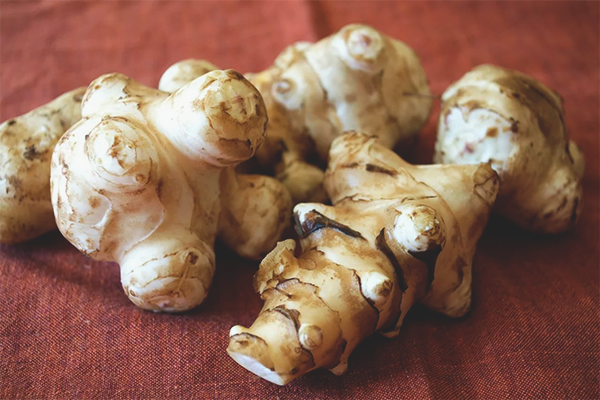
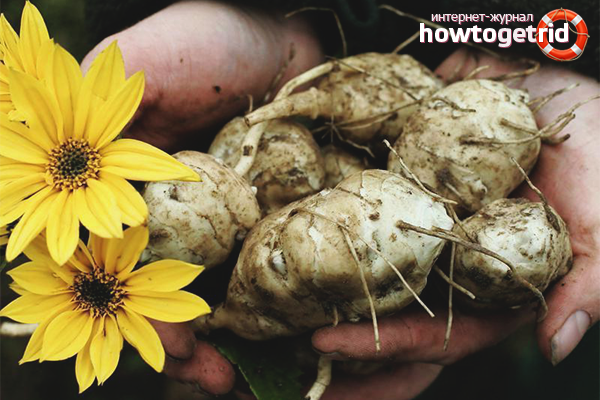
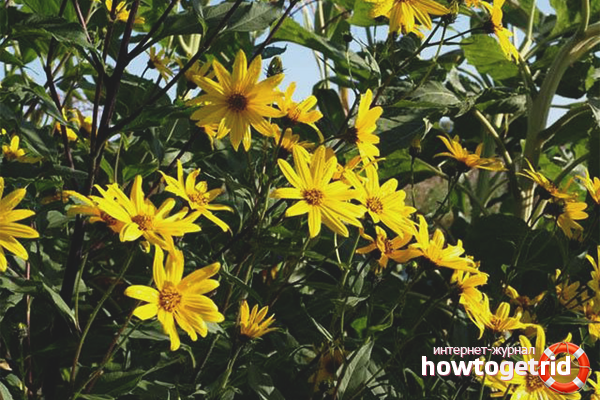
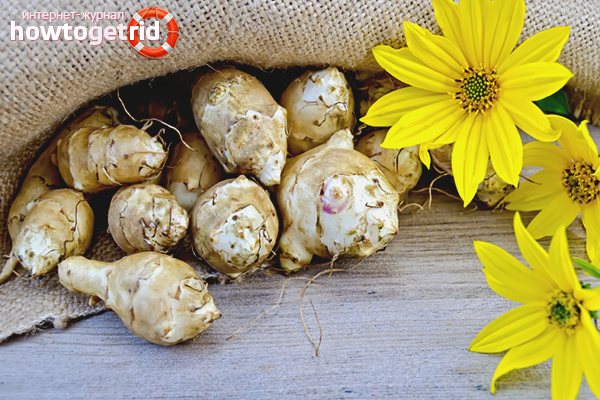

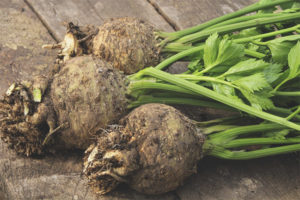
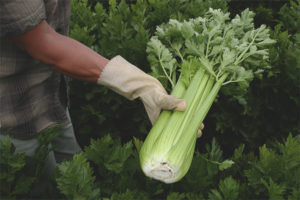

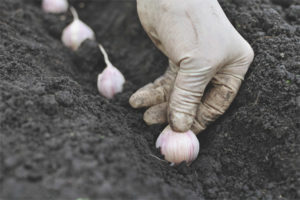
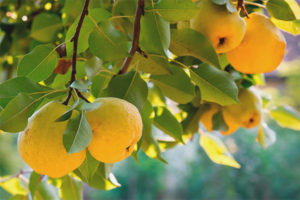
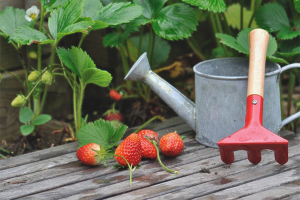

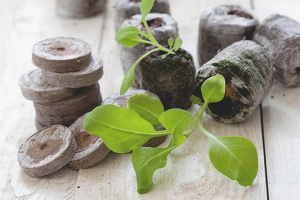
To send
I saw on sale in the store "Lenta" (in St. Petersburg) large and beautiful tubers of Jerusalem artichoke. Can I take them for planting? If it is possible, then is it necessary to process them somehow? Thanks so much for your information on topinambur.